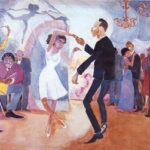Bacon’s Rebellion was an insurrection in the Virginia Colony in 1676. The uprising was led by Nathaniel Bacon and was focused on eradicating Native Americans from the Virginia frontier and neighboring areas. Bacon’s Rebellion brought together poor whites and blacks to fight against the perceived larger threat of Native American violence. While the rebellion did not succeed in its stated goals, it did have major repercussions and can be noted as the most important event in American history prior to the American Revolution.
During the years prior to Bacon’s Rebellion, there were several skirmishes between colonists and Native Americans. Virginia farmers demanded that Native Americans be removed from the land. Native Americans were accused of stealing property and killing colonists. Each side participated in numerous retaliatory acts against the other side. As the situation escalated, Virginia’s governor, William Berkeley, refused to support any policy of removal. Rather, Berkeley, who had no desire to start an all out war with the Native Americans, “advocated a policy of containment of the Native American threat” (Wiki article). Many colonists disagreed with this policy and viewed it as weak.
Among those who disagreed with Berkeley’s containment policy was a young, wealthy planter named Nathaniel Bacon. Despite his prominent position is society, the young Bacon was described as being “a troublemaker and schemer” who was “disdainful of labor” but still “intelligent and eloquent” (GlobalSecurity article). Given these traits, it is not surprising that a wealthy planter was able to draw in a group of poor followers numbering beyond 500. Bacon was charismatic and his cause was one with which they could identify. His poor followers included many formed indentured servants and free blacks whose lands were closer to Indian lands. These followers suffered from attacks by Native Americans more than the wealthy class. Further, the poor were armed and those who were not already free were promised their freedom.
The wealthy upper class immediately recognized the threat posed by Bacon’s Rebellion. They viewed the coming together of poor whites and blacks against the less numerous wealthy class as a threat not only to the peace of the colony but also to power structure which the wealthy controlled. This uniting was the “great fear of the ruling class” (PBS article). The wealthy class knew that with the poor of all classes against them the power they held was threatened. Berkeley refused to give Bacon a commission which would allow him to proceed with legal backing. When Bacon continued his rebellious insurrection, Berkeley declared him a rebel.
Bacon’s Rebellion fizzled to an end after Nathaniel Bacon’s sudden death in October 1676. During the Rebellion, Jamestown had been burned by the rebels and many Native Americans were killed during raids. Few of the rebels or those opposed to the rebellion lost their lives. However, despite the relative low loss of life, there were many changes in the wake of Bacon’s Rebellion. These changes would have lasting repercussions.
The members of Virginia’s wealthy class knew that they must make changes to their workforce after the rebellion. As a result of Bacon’s Rebellion, wealthy planters sought a way to control the poor class in order to keep them from uniting in support of a cause again. Many historians believe that Bacon’s Rebellion “hastened the transition to racial slavery” (PBS article). After the rebellion, wealthy planters quickly made a transition to racial slavery. By relying upon a “workers from Africa who could be denied the right to bear arms because of their race”, planters were no longer dependent upon white workers (Takaki 60). White workers could arm themselves and, as a result, posed a greater threat to the power of the wealthy class.
In the end, Bacon’s Rebellion failed to eradicate Native Americans from the Virginia frontier as it had intended. However, it did lead to a monumental change in the Virginian workforce. This change eventually affected all of the colonies and set the new nation up for a system of slavery based on race. The lasting effects of Bacon’s Rebellion make it the most important event in American history prior to the American Revolution.
Sources
Africans in America, Part I: Bacon’s Rebellion. (1998). Retrieved from http://www.pbs.org/
wgbh/aia/part1/1p274.html
Bacon’s Rebellion. Retrieved from http://www.globalsecurity.org/military/ops/bacon.htm
Bacon’s Rebellion. (last updated 19 Feb 2010.) Retrieved from http://en.wikipedia.org/
wiki/Bacon%27s_Rebellion
Takaki, R. (2008). The hidden origins of slavery. A different mirror (Revised ed., pp. 49-71).
New York: Back Bay Books.





